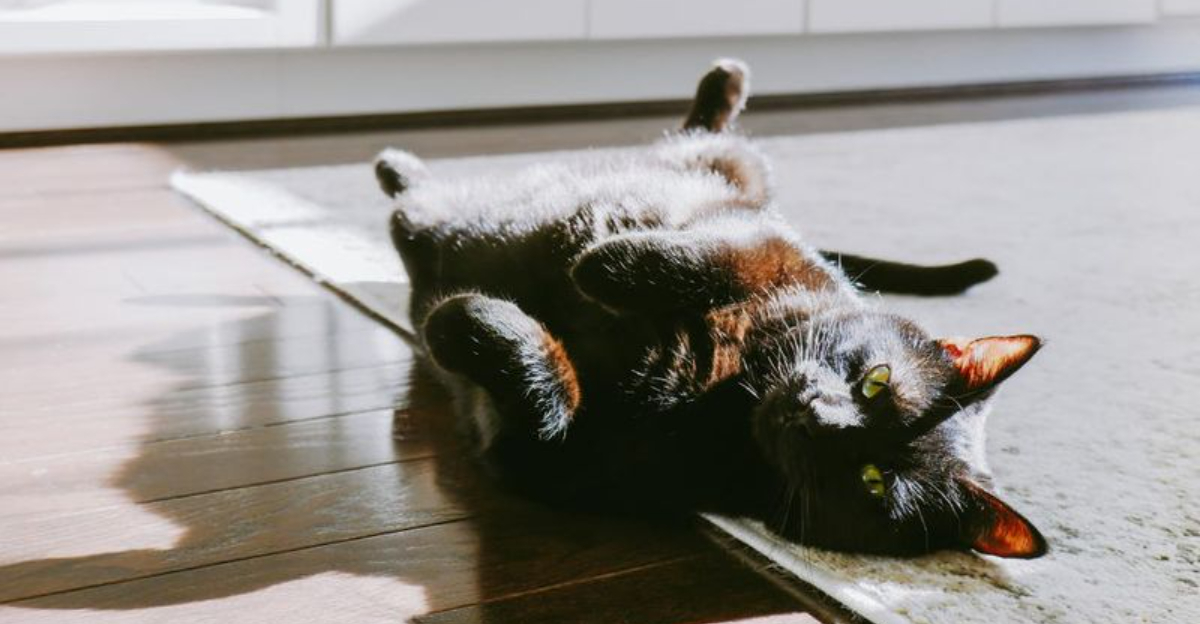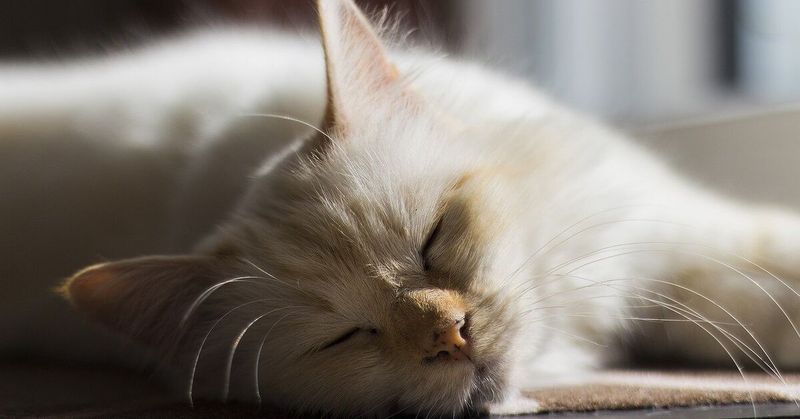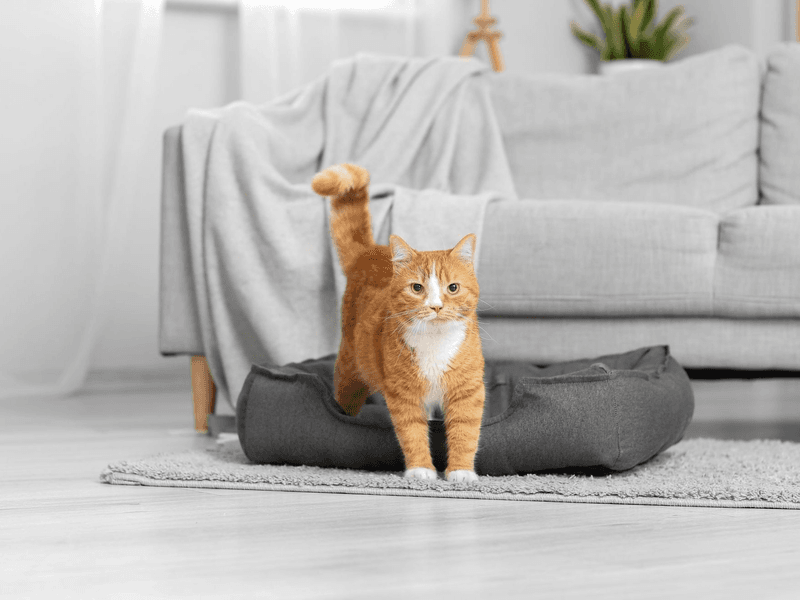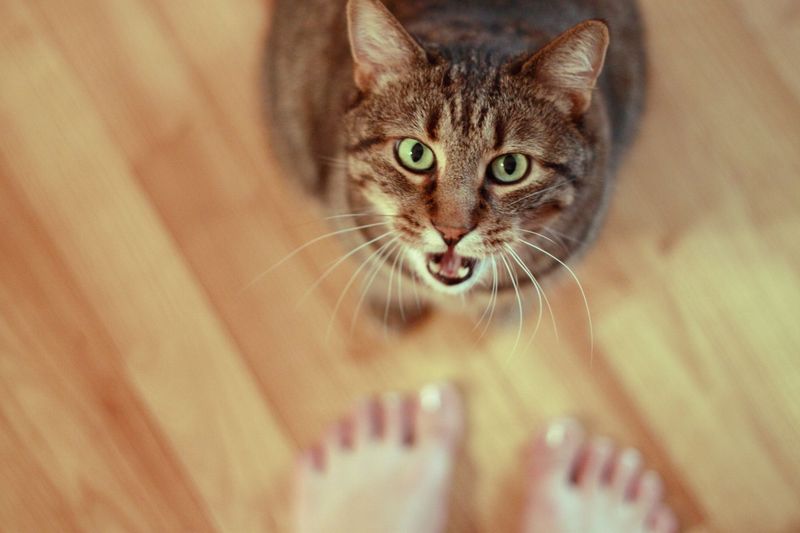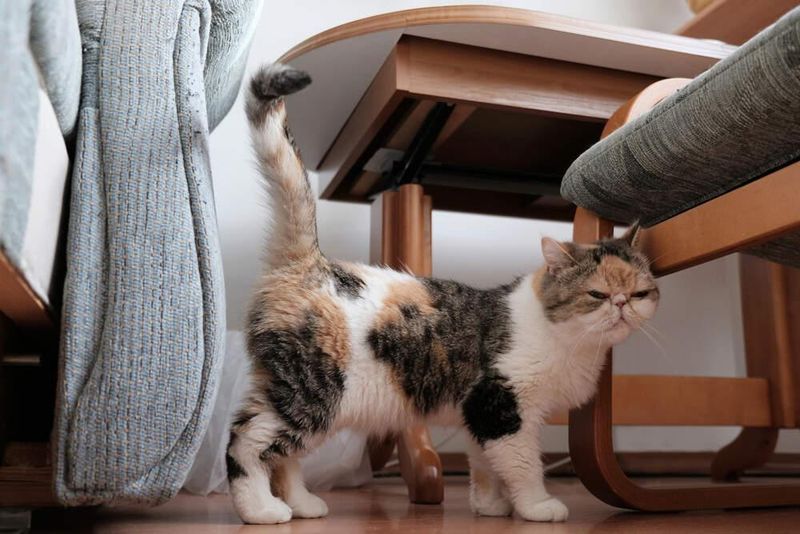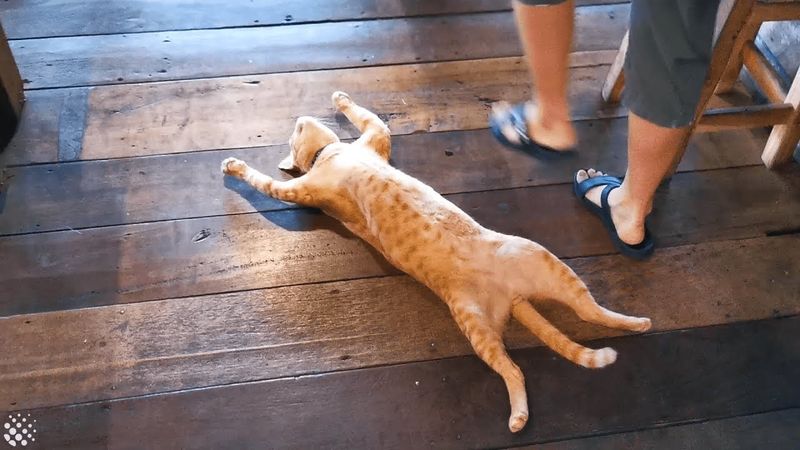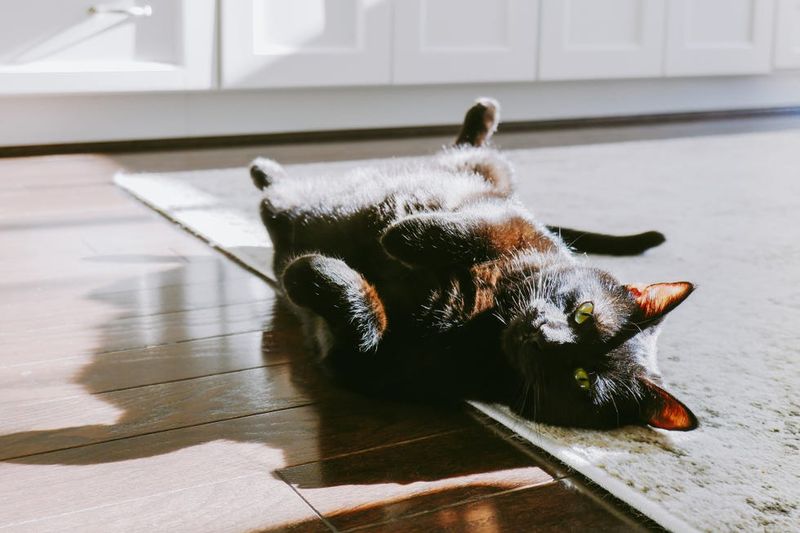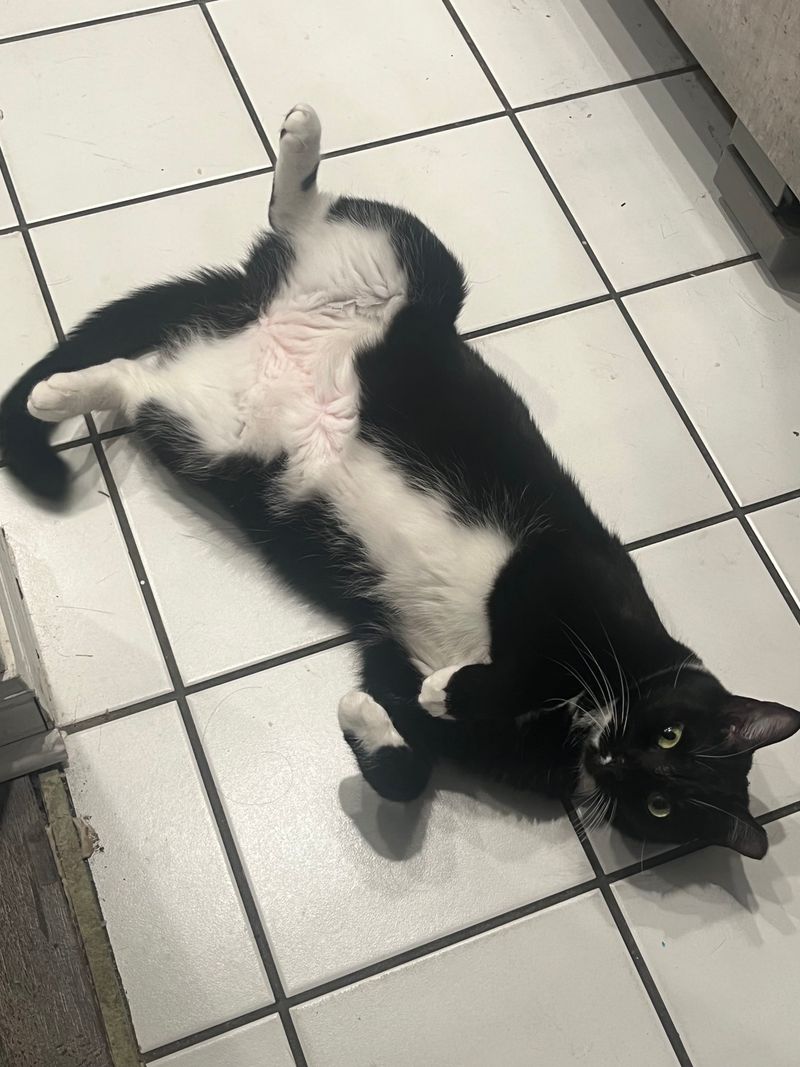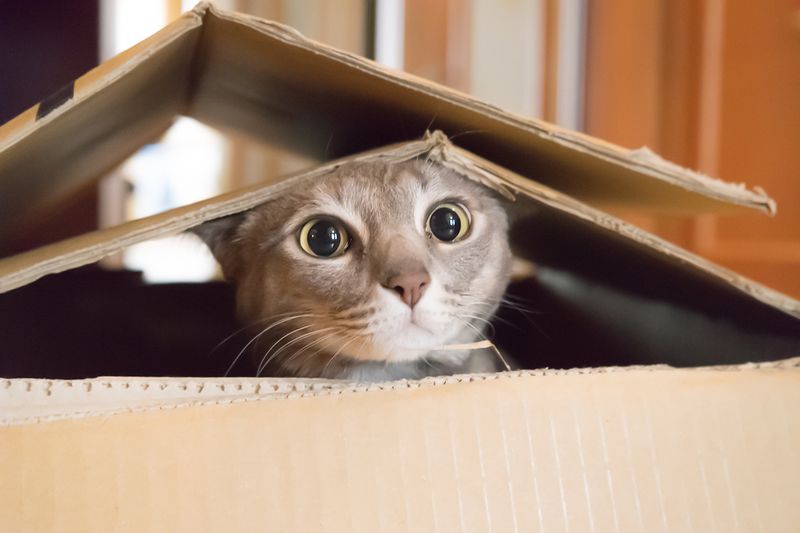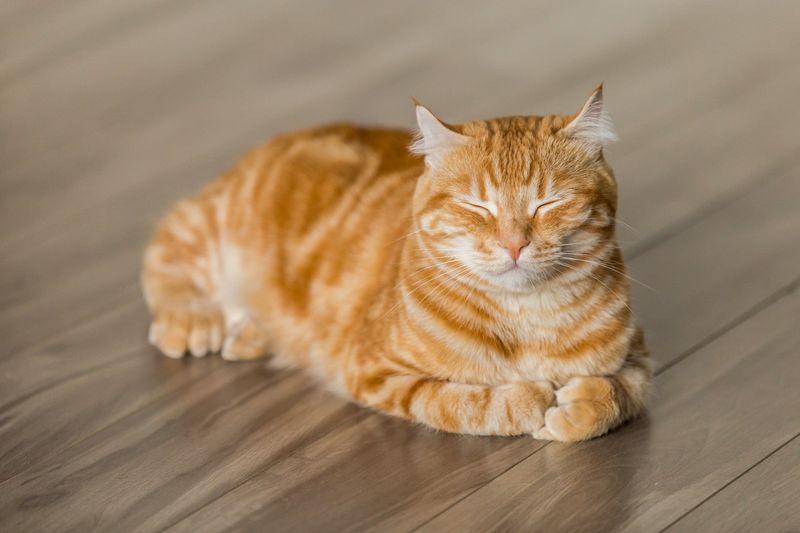📖 Table of Content:
If you’ve ever found yourself carefully stepping around your lounging cat who’s plopped right in the center of your living room, you’re not alone. Many cat owners are familiar with the sight: a feline stretched across the floor, seemingly unbothered by the hustle and bustle of the household. It might seem like an odd choice when they have cozy beds, window perches, and sunny spots to pick from—so why the middle of the room?
Cats are creatures of both instinct and comfort, guided by behaviors rooted in their wild ancestry, quirky personalities, and finely tuned senses. Laying in the middle of a room isn’t random—it often serves a specific purpose, even if it’s not immediately obvious to us. Whether it’s a way to monitor their surroundings, claim territory, or cool off on a hot day, there’s usually a reason behind the pose.
In this article, we’ll break down 10 possible reasons your cat might be drawn to this curious location. From practical motivations like temperature regulation to social instincts and territorial habits, you’ll gain insight into your feline’s mind. By understanding these behaviors, you can better respond to their needs—and maybe save yourself from tripping over your tiny house guardian in the process.
1. Temperature Regulation
Regulating body temperature is a daily mission for your cat, especially since they can’t sweat like humans do. Depending on the season, your cat may sprawl out on the floor to either soak in warmth or escape the heat. Hardwood or tile floors stay cool and can feel refreshing on a hot day. Alternatively, a sunny patch in the center of the room might act like a personal feline sauna. Cats are smart when it comes to thermoregulation, often moving throughout the day to chase or avoid heat. If you notice your cat switching positions as the sun shifts, this is likely the reason. Pay attention to where your air vents and sunny areas are—you might find a pattern.
2. Visibility and Surveillance
Claiming the center of the room gives your cat a strategic visual advantage. From this position, they can see people coming and going, other pets moving about, or even potential prey like bugs or dust particles. Cats are naturally alert creatures and like to stay aware of their surroundings. They don’t want to be startled, so having a full view of the room puts them at ease. Even in a safe home, this behavior mimics their wild instincts of watching for danger. Your cat might seem relaxed, but make no mistake—they’re on duty. This spot serves as their lookout tower, minus the elevation.
3. Attention-Seeking
Drawing your focus is something cats do in subtle (and not-so-subtle) ways. Laying directly in your path ensures that you’ll notice them—even if it means you’re forced to stop or step around. They may roll over, stretch dramatically, or blink at you slowly once you do. If this happens when you’re busy or on the move, your cat may just want a moment of your time. Attention-seeking doesn’t always mean they want cuddles; sometimes it’s about play or food. Don’t be surprised if they meow or try to grab your feet—this is all part of the act. Being center stage is a guaranteed way to stay on your radar.
4. Comfort and Habit
Gravitating toward the same spot repeatedly is often just about comfort. Once your cat has decided the middle of the room feels good—whether due to lighting, softness, or peace—they’ll return there out of habit. Cats love routines and will build small rituals around their favorite spots. You might even notice that they circle or knead the area before settling down. Their preference could also be linked to household noise patterns or the location of heating/cooling systems. Unlike humans, cats don’t need cushions and blankets to feel cozy. What looks bare to us might feel just right to them.
5. Scent Marking
Claiming territory is second nature to a cat, and the center of the room is prime real estate in their eyes. By laying there, they’re spreading their scent through glands located on their face, paws, and body. This scent marks the space as theirs and creates a familiar “safe zone” for them to return to. It’s a way of silently communicating, “This is mine.” Even if there are no other pets around, your cat still feels the need to assert presence. Their scent layering is comforting and can reduce anxiety, especially in multi-pet households. Consider it their invisible signature on your floor.
6. Safety from Corners
Retreating into corners may feel instinctual for protection, but for cats, those spots can be full of sensory surprises. Laying in the open provides your cat with escape routes in all directions, which actually makes them feel safer. Corners may limit their field of vision and trap them if startled. The center space gives them more confidence to relax fully without being boxed in. Plus, in busy homes, corners may be more chaotic with foot traffic, noise, or clutter. Your cat assesses risk differently and often finds comfort in unexpected places. Open areas might just be their version of safe.
7. Cool Surface Preference
Stretching out on a cool floor can be downright blissful for a warm-bodied feline. Many cats are heat-sensitive and gravitate toward cooler surfaces like tile, stone, or wood during hot months. The center of the room often has the least furniture coverage, giving them full access to open space. Unlike carpet, hard surfaces don’t trap heat, which is ideal when they’re trying to cool off. You may notice them switching spots throughout the day depending on where the coolest spot is. It’s a bit like their own version of air conditioning. Watch how they seek out the perfect spot like heat-seeking missiles in reverse.
8. Habitual Behavior
Falling into a daily pattern is a comfort mechanism for cats. If they’ve found the middle of the room to be pleasant or calming, they’ll keep returning to it out of routine. It might have started with one nap, and now it’s their go-to place. Cats are highly territorial and love establishing personal zones, even in shared spaces. Over time, their consistent return reinforces the habit, and it becomes part of their daily rhythm. You’ll often see them stretch, circle, and plop down like clockwork. This behavior tells you they’ve “claimed” that part of the floor emotionally.
9. Social Engagement
Positioning themselves where everyone else is ensures your cat stays connected. Even if they’re not on your lap or in your face, being in the middle keeps them socially involved. Cats enjoy being part of the family unit while maintaining autonomy. From the floor, they can listen, observe, and feel like part of the group without being overwhelmed. Some cats may even flop on their back or “speak” with chirps and blinks while lying there. It’s a quiet way of saying, “I’m here with you.” This spot acts as their social anchor.
10. Playfulness or Anticipation
Waiting in the middle of the room might mean your cat is ready for action. Whether anticipating a toy, chasing a light beam, or preparing for a zoomie sprint, this space gives them the perfect launchpad. Cats often lie low before making a surprise leap or sprint, mimicking stalking behavior. They might twitch their tail or widen their eyes as a sign they’re alert and ready. The openness gives them room to maneuver in all directions. This posture is less about lounging and more about play mode activation. You might just be witnessing the calm before the pounce.
